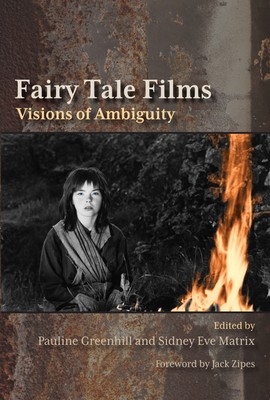
- We will send in 10–14 business days.
- Publisher: Utah State University Press
- ISBN-10: 0874217814
- ISBN-13: 9780874217810
- Format: 15.5 x 23.1 x 2 cm, minkšti viršeliai
- Language: English
- SAVE -10% with code: EXTRA
Fairy Tale Films (e-book) (used book) | bookbook.eu
Reviews
Description
In this, the first collection of essays to address the development of fairy tale film as a genre, Pauline Greenhill and Sidney Eve Matrix stress, "the mirror of fairy-tale film reflects not so much what its audience members actually are but how they see themselves and their potential to develop (or, likewise, to regress)." As Jack Zipes says further in the foreword, "Folk and fairy tales pervade our lives constantly through television soap operas and commercials, in comic books and cartoons, in school plays and storytelling performances, in our superstitions and prayers for miracles, and in our dreams and daydreams. The artistic re-creations of fairy-tale plots and characters in film--the parodies, the aesthetic experimentation, and the mixing of genres to engender new insights into art and life--mirror possibilities of estranging ourselves from designated roles, along with the conventional patterns of the classical tales."
Here, scholars from film, folklore, and cultural studies move discussion beyond the well-known Disney movies to the many other filmic adaptations of fairy tales and to the widespread use of fairy tale tropes, themes, and motifs in cinema.EXTRA 10 % discount with code: EXTRA
The promotion ends in 22d.18:31:18
The discount code is valid when purchasing from 10 €. Discounts do not stack.
- Publisher: Utah State University Press
- ISBN-10: 0874217814
- ISBN-13: 9780874217810
- Format: 15.5 x 23.1 x 2 cm, minkšti viršeliai
- Language: English English
In this, the first collection of essays to address the development of fairy tale film as a genre, Pauline Greenhill and Sidney Eve Matrix stress, "the mirror of fairy-tale film reflects not so much what its audience members actually are but how they see themselves and their potential to develop (or, likewise, to regress)." As Jack Zipes says further in the foreword, "Folk and fairy tales pervade our lives constantly through television soap operas and commercials, in comic books and cartoons, in school plays and storytelling performances, in our superstitions and prayers for miracles, and in our dreams and daydreams. The artistic re-creations of fairy-tale plots and characters in film--the parodies, the aesthetic experimentation, and the mixing of genres to engender new insights into art and life--mirror possibilities of estranging ourselves from designated roles, along with the conventional patterns of the classical tales."
Here, scholars from film, folklore, and cultural studies move discussion beyond the well-known Disney movies to the many other filmic adaptations of fairy tales and to the widespread use of fairy tale tropes, themes, and motifs in cinema.

Reviews